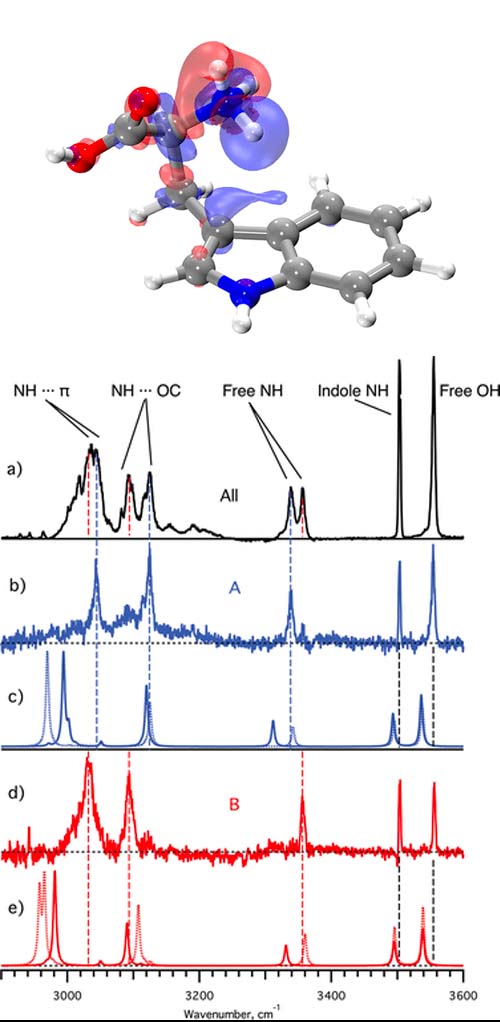Steele Group Research
Vibrational Spectroscopy Methods
|
Recent experimental progress in cold ion sources and optical spectroscopies has unearthed considerable new detail for hydrated-ion complexes, but the connection between these spectral signatures and their underlying intermolecular interactions often remains elusive, to the continued frustration of experimentalists. Our method-development efforts in the last several years have focused on the nature of vibrational couplings. By exploiting the distance decay of localized vibrational modes, we can accelerate simulations of challenging vibrational spectra by several orders of magnitude. Current efforts seek to enhance these approaches by investigating the electronic origin of vibrational couplings. |
 |
Molecular Dynamics Methods
|
The main objective of this research program is to discover innovative, new approaches for computational simulations of quantum chemical dynamics. An underlying theme of this research program is that a true interface between electronic structure and dynamics can dramatically enhance such simulations as research tools. The developed methodology exploits the inherent spatial and temporal separability of under-the-hood electronic structure theory components for new dynamical simulations of large, reactive chemical systems. Key developments include the demonstration and implementation of multiple-timestep methods for ab initio molecular dynamics and ab initio path integral simulations. |
 |
Water Activation by Ions/Radicals/Metals
|
Stable, secure, widely distributed sources of renewable energy remain a daunting societal and scientific challenge. The splitting of water, as a means of chemically storing solar energy, offers as many promises for renewable energy as it does questions for the field of chemistry. The applied objective of our spectroscopy methods includes unraveling mechanistic details and their experimental signatures for water-splitting catalysts. The guiding philosophy is to unify both the fundamental manner in which strong ions/radicals/metals activate solvent, as well as vibrational signatures that highlight the mechanisms of real water-splitting catalysts.
|

